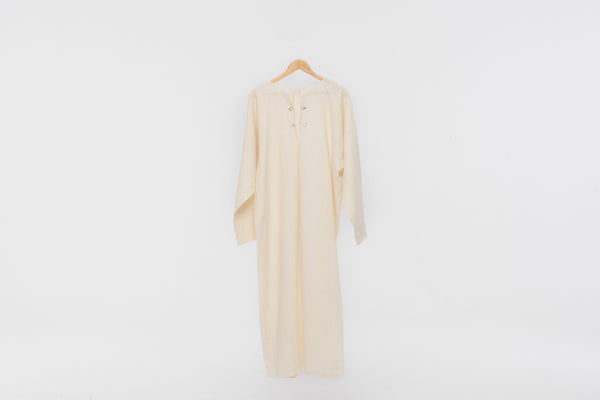The history of the funeral gown
The Funeral gown's tradition
In various cultures and countries in Europe, it used to be a tradition for the bride to sew a linen gown for herself and her future husband. They would wear the shirts on their wedding day and wedding night. After this night, the shirts were only worn once more. They were washed every year, until they were finally used as a funeral gown.
The needle
Not only the shirt itself carries a story. It was tradition to break the needle that was used for sewing and put it in the coffin. Sometimes the needle was even thrown into the fire. It was believed that if one touched a tooth with it, it would fall out, and that a prick from this needle would make an incurable wound. This superstition arose because this needle was seen as the meeting of the sacred, marriage, and the dangerous, death.
A square opening
Sometimes it happened that a shroud had a square opening at the back. This was not because of symbolism or belief; it was customary to use the material of the shroud for other purposes, if there was no other material left in the house. "You can't see it when lying down" was the common saying. Our linen shroud is of course completely intact, so that the body is neatly covered at the back.
Other symbolism
In addition to these Western traditions, the linen shirt is also part of an Egyptian tradition. Pharaohs were wrapped in linen cloths before they were mummified. Flowering flax plants, the plant used to produce linen, were painted on the wall paintings in their tombs. The Egyptian patron goddess Isis was depicted in these paintings in spotless white linen clothing. In this way, the Pharaohs were said to be protected by her after death.
Our Funeral gown
The Funeral gown can be used for a wake on a bed, a carrier or in a coffin, and later for the funeral itself. At the neck, the shirt opens up like a flower. The shirt has a pleat in the middle front that is secured with four nacre buttons. You can view our Funeral gown here.



